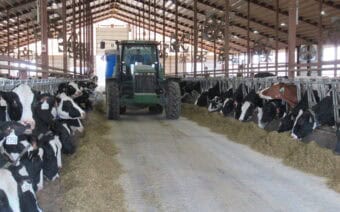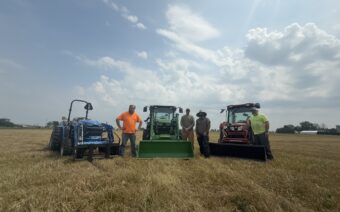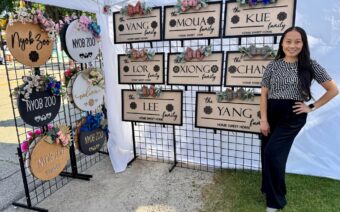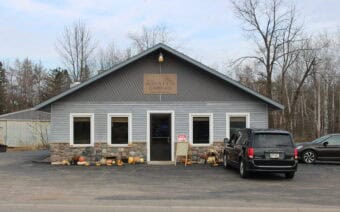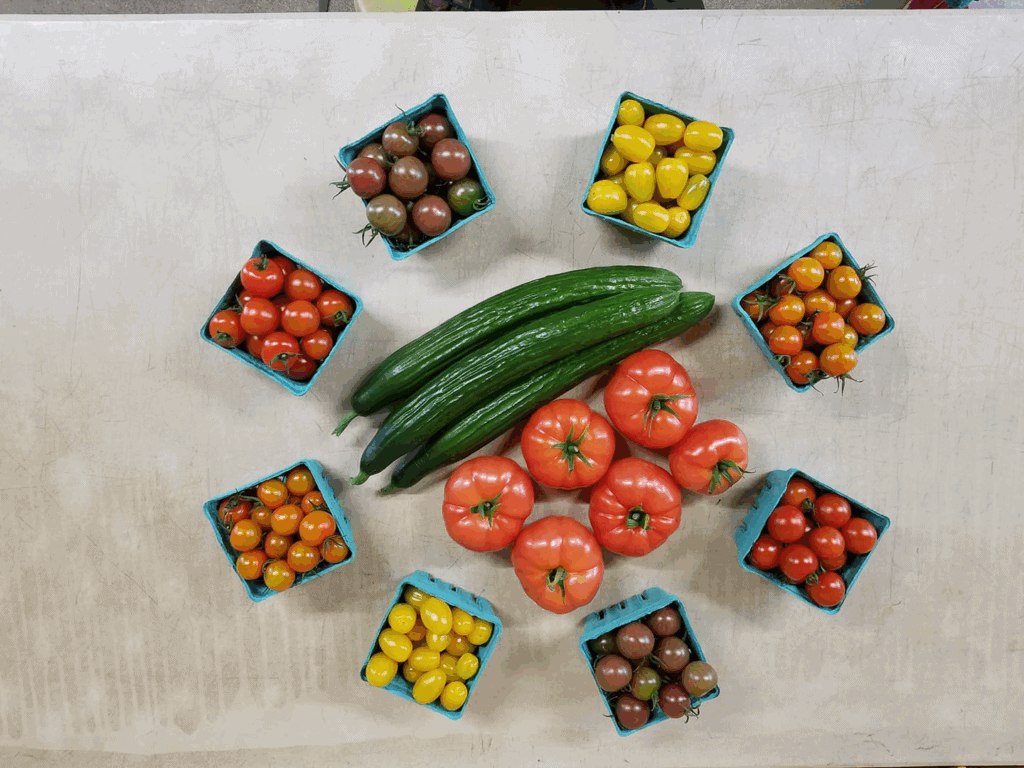
August 11, 2025
MALONE – Lenny Opsteen – who has owned and operated Ledgeview Farms of Johnsburg in Malone with his wife, Deborah, since 2009 – said there are many advantages to hydroponic farming.
There are environmental benefits, the most significant, Opsteen said, being reduced water consumption and controlled nutrient usage.
Because plants are grown using water, nutrients and light in a controlled environment, he said crops can grow faster and produce a higher yield.
Furthermore, Opsteen said plants can be grown vertically, using little to no arable land.
And because the plants are grown indoors or in controlled environments, Opsteen said they aren’t as dependent on climate or growing seasons.
So, in some areas, he said, crops can be ground year-round, but in all areas, the growing season is longer than for traditional farmers.
Even more, Opsteen said by using different available substrates for growing instead of soil, soil-borne diseases and pests are eliminated – contributing to lower crop maintenance costs.
He said he first got interested in the concept of hydroponic farming when he saw a greenhouse from the outside.
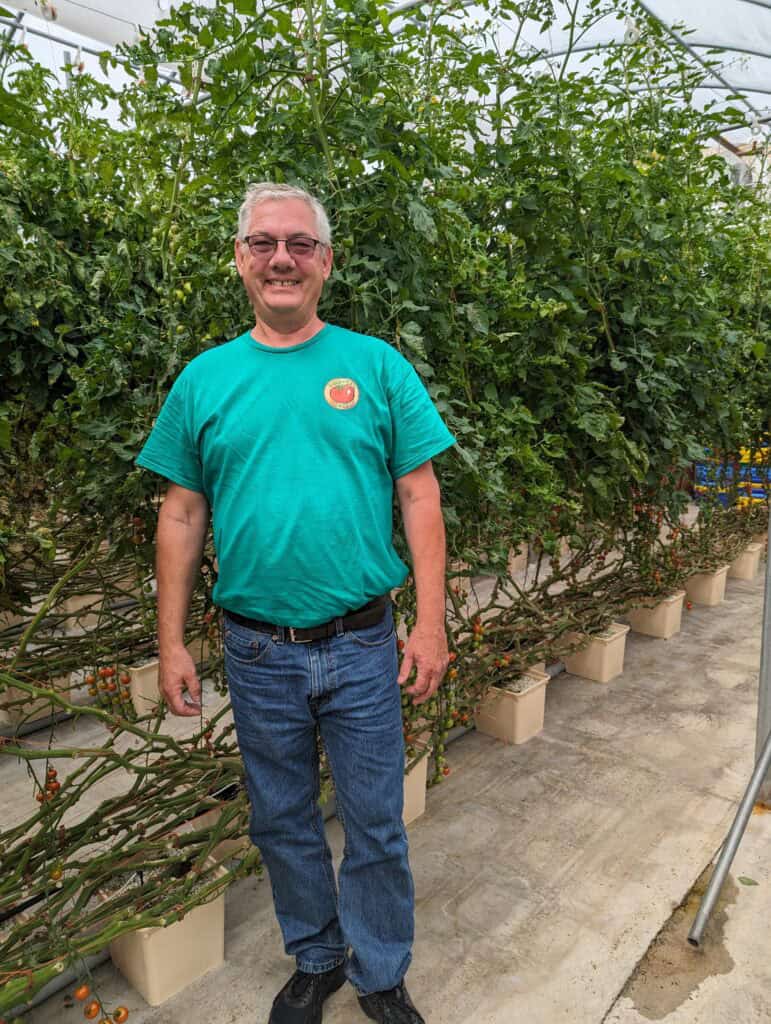
“It was a bigger scale than ours is, but it looked interesting to me,” he said. “After that, I started doing some research. My wife was intrigued, my step-daughter showed an interest and we went from there.”
Opsteen said his step-daughter, Heather Guelig, had been in college studying dairy science but changed her major to accommodate the farm as their interest in hydroponic farming grew.
“When she graduated, we started the farm, and Heather has been our horticulturalist since day one,” he said.
The early days of the farm
Opsteen said their interest in hydroponic farming was two-fold: it’s unique and highly effective.
“We are able to grow on one-third of an acre what would take about 10 acres on the outside to accomplish,” he said. “So, we take advantage of the efficiencies of the operation, and we’re also able to take advantage of vertical [farming].”
To further their hydroponic farming knowledge, Opsteen said he, his wife and Guelig attended a three-day workshop put on by the manufacturer of the greenhouse they purchased.
However, Opsteen said even the best laid plans can sometimes fall apart, and that’s sort of what happened with them, right off the bat.
“When we first put up the building, we had a learning curve because my original business plan didn’t work very well,” he said. “My goal was to be strictly commercial, but we found out right away that while my target businesses were really interested, we weren’t big enough to meet their demands.”
What they were growing in a year, Opsteen said, “we would need in a week” to meet those businesses’ demands.
“So, we were forced to shift gears pretty fast,” he said. “We developed small retail [customers] and then a lot of the local restaurants came on board. Then we were able to start getting into the grocery stores.”
After shifting gears, Opsteen said they found their niche relatively quickly.
“We modified our offerings, too,” he said. “When we first started, we were 100% beefsteak tomatoes. Then we introduced cucumbers, and then went into cherry tomatoes. Now, we also have heirloom and Roma tomatoes, in conjunction with everything else.”
Today, Opsteen said Ledgeview Farms of Johnsburg offers English cucumbers and a wide variety of tomatoes.
Making good use of the space
Opsteen said they take full advantage of all the available space their 12,000-square-foot greenhouse affords – which is filled with approximately 2,900 10-foot-tall plants.
“We train our plants to grow 10 feet tall, and we maintain that height all through the growing season,” he said. “As they grow and exceed that height, we [cut back the height] to maintain the 10 feet. We keep pulling them down and pulling them forward.”
Though they maintain them to be at least 10 feet, Opsteen said the vines keep growing.
“Ultimately, our vines will get somewhere between 25 and 30 feet long by the end of the season,” he said.
Though other farmers maintain their plants at a lower height, Opsteen said 10 feet is what works most effectively for them.
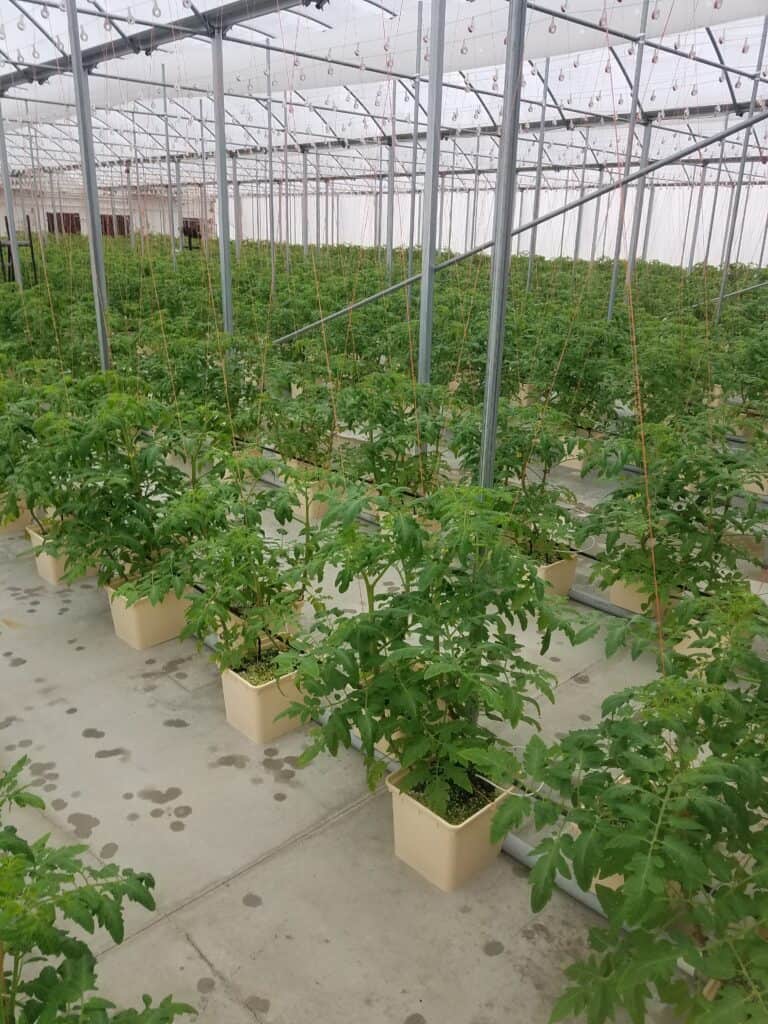
“Most people will only let their plants get three or four feet tall,” he said. “But we maintain ours at 10 feet, and we maintain seven clusters at a time. So, instead of having a single harvest, like most farmers do, we have a continual harvest from approximately mid-April to mid-November. In fact, this time of year we’re picking three times a week because we have a stronger harvest.”
Opsteen said to maintain efficiency in their feeding method, they inject feed directly into the plants’ root ball.
“Since the plants aren’t looking for anything [nutrient-wise], we’re able to concentrate on fruitation [also known as fruition], instead of vegetation,” he said. “That makes it a lot more efficient, and we get a larger plant and a higher harvest rate. And since we don’t need to space things apart like a conventional farmer does, we’re able to condense our workload.”
Though hydroponic farms have the option of planting in a variety of “beds,” Opsteen said they plant in perlite – a volcanic substance.
This, he said, means they don’t have the bacteria to deal with, nor the bugs and insects – and there’s no real competition from weeds.
“We grow two plants in a cubic foot,” he said. “A lot of our efficiencies come from the fact that we can grow a lot in a small area. It’s kind of like square-foot farming where we’re really compact.”
Placing the greenhouse on a heated concrete slab, Opsteen said, allows them to control the bucket temperature – maintaining a 68-to-70-degree temperature for the rootball throughout the growing season.
“We heat in the winter and the spring, and the building can maintain that temperature pretty much during other times,” he said.
Opsteen said Guelig spends about 40 hours a week in the greenhouse, touching every single plant – doing top maintenance, pruning, watching for “suckers,” maintaining the overall health of the plant and making sure that the next growth comes from the top of the plant.
“Ultimately, a plant wants to be in a vegetative state – it’s always trying to determine where it wants to put its energy and if it’s going to make fruit or not,” he said. “A sucker is really another plant or vine that the plant produces between a leaf and the vine itself. They all need to be stripped out, basically eliminating anything the plant doesn’t need.”
Striping leaves off the bottom, Opsteen said, is a delicate process.
“[Heather] has to leave enough on so that we can get strong photosynthesis, so the plants remain healthy,” he said. “There’s a fine line Heather has to maintain between fruitation and vegetation… We also have to maintain the plant so the top can keep growing, so we can lengthen our growing season.”
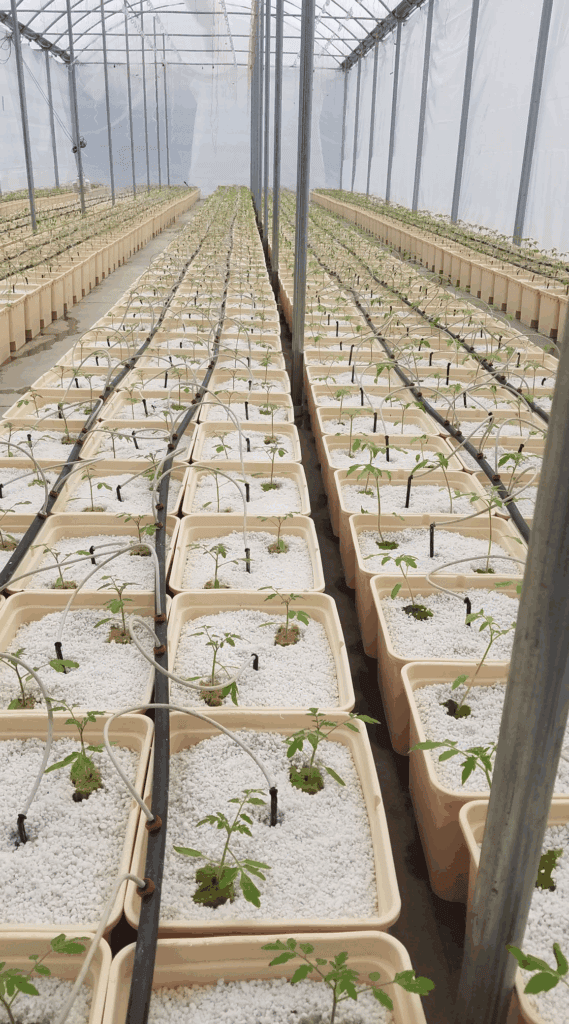
The other half of Guelig’s time, Opsteen said, is spent watching the bottom of the plant – stripping leaves and watching for suckers, doing a little pruning and watching the buckets to make sure the proper amount of fertilizer is reaching the plants.
Opsteen said she’s also watching to make sure drainage is occurring as it should and seeing if any insects have made their way in.
“There really shouldn’t be any with this kind of farming, but once you see the first bug, it’s already too late,” he said.
Growth on the horizon
Depending on the time of year, Opsteen said they have four or five people working on the farm, with only one employee who is not family.
Looking to the future, Opsteen said the plan is to expand – not only in the amount of the produce they already grow but adding other crops to their offerings as well.
He said he expects that to happen in the next year or so.
“We’re to that point where our building [can really only hold what we’ve already planted],” he said. “So, there’s not much room for expansion. Every year, just from word of mouth, we pick up new customers or have the ability to pick up more customers, but we can’t serve them [at this point] – we don’t have enough [space].”
From March to November, Ledgeview Farms of Johnsburg – located at W3351 Schumacher Road – is open from 8 a.m. to 4 p.m. Monday through Friday.
Opsteen said in addition to their small farm store on site, Ledgeview Farms products are available at local farmers’ markets in Fond du Lac, Oshkosh and Elkhart Lake.
Though the farm is closed to the public from mid-November until mid-March, Opsteen said the work doesn’t stop.
“We shut down after Thanksgiving, and we clean out and sanitize the whole building,” he said. “We clean out all the old plants and empty all the buckets. The buckets are also sanitized. Then we replant and start fresh the week before Christmas.”
 Talent, businesses join Croux for new staffing solutions
Talent, businesses join Croux for new staffing solutions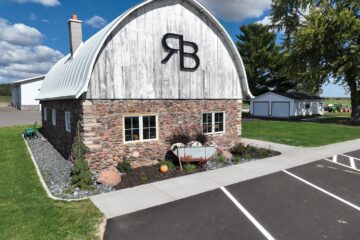 From ranching to retail, Ranch Brand Meat Company controls entire process
From ranching to retail, Ranch Brand Meat Company controls entire process



